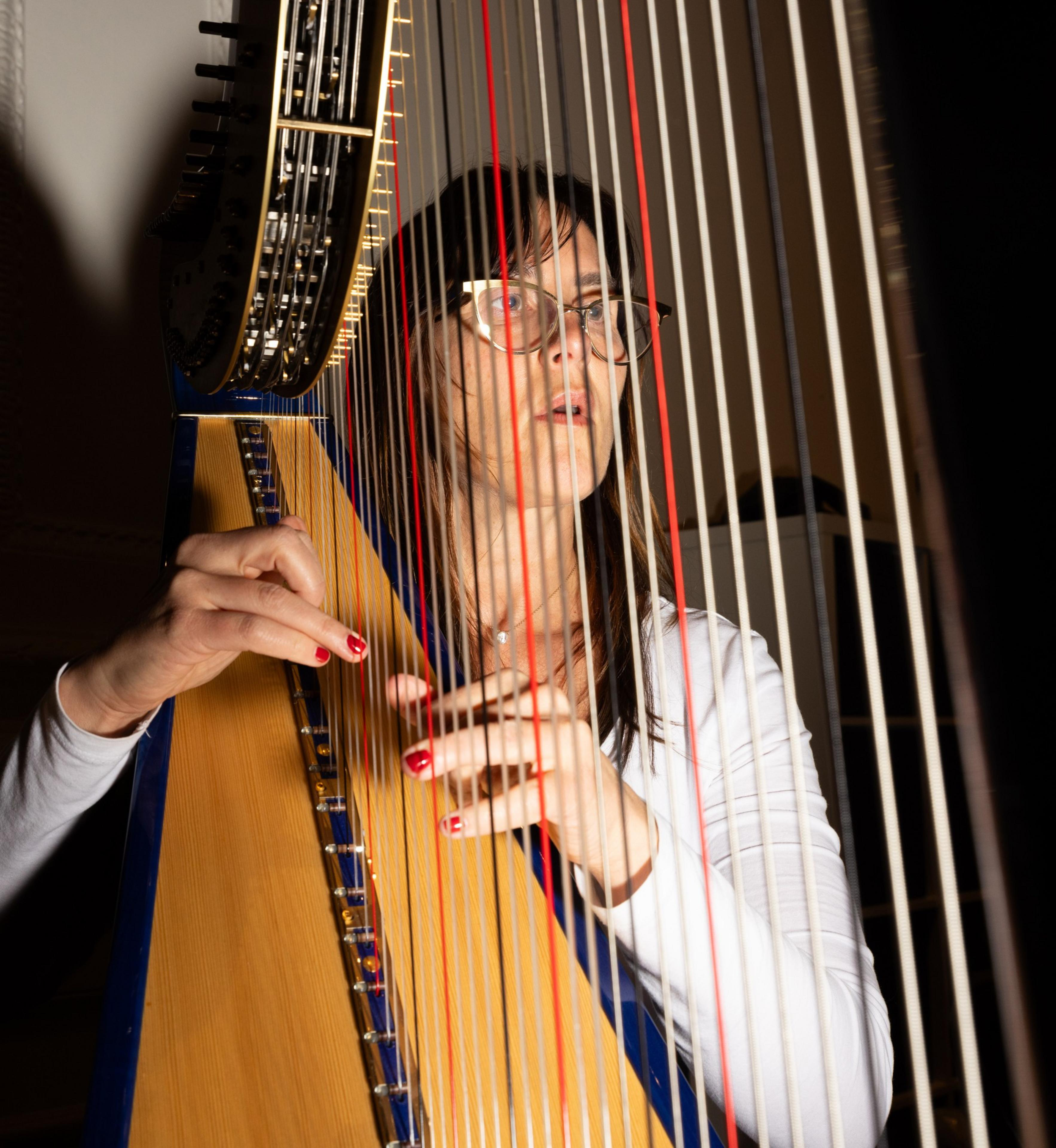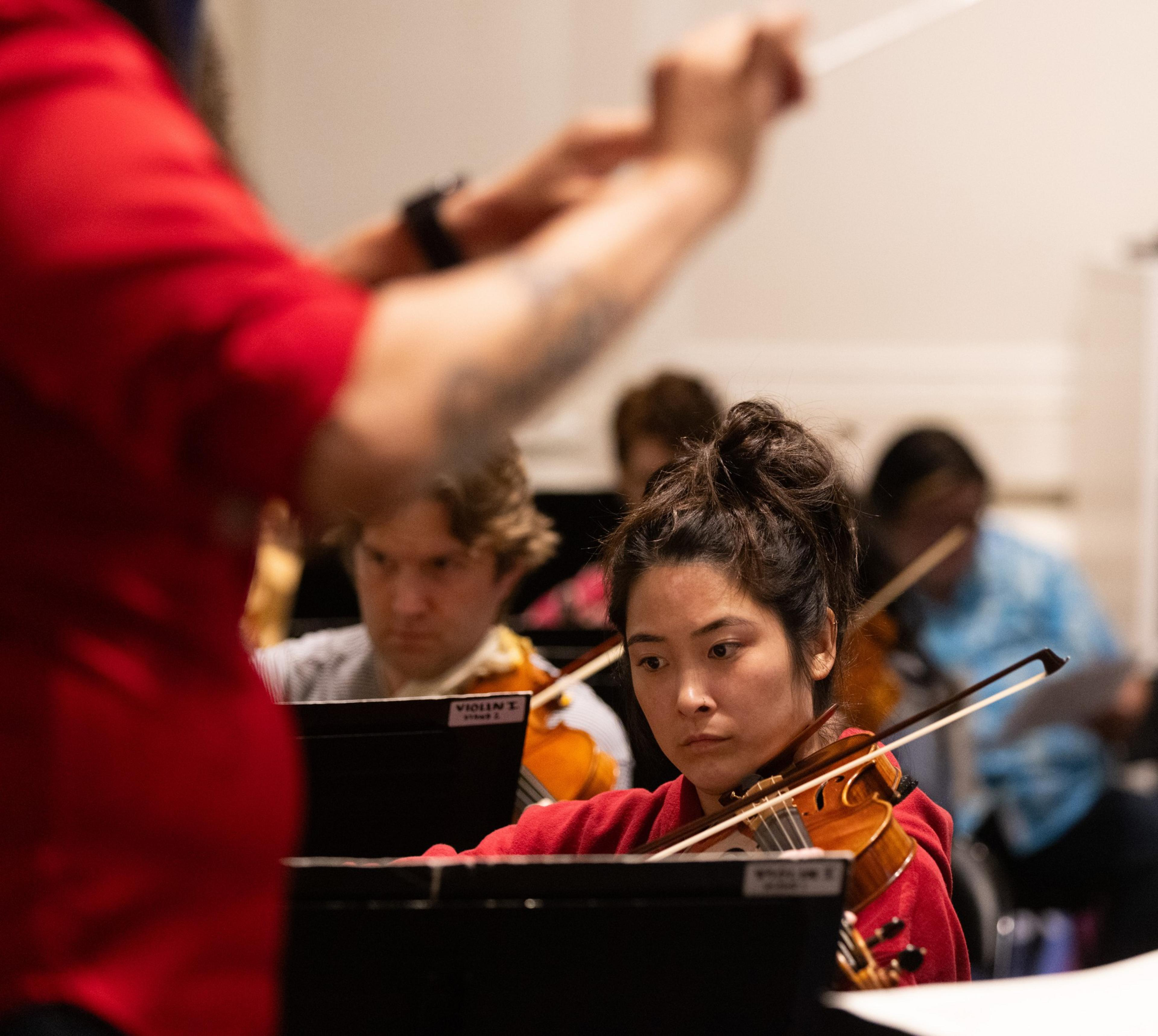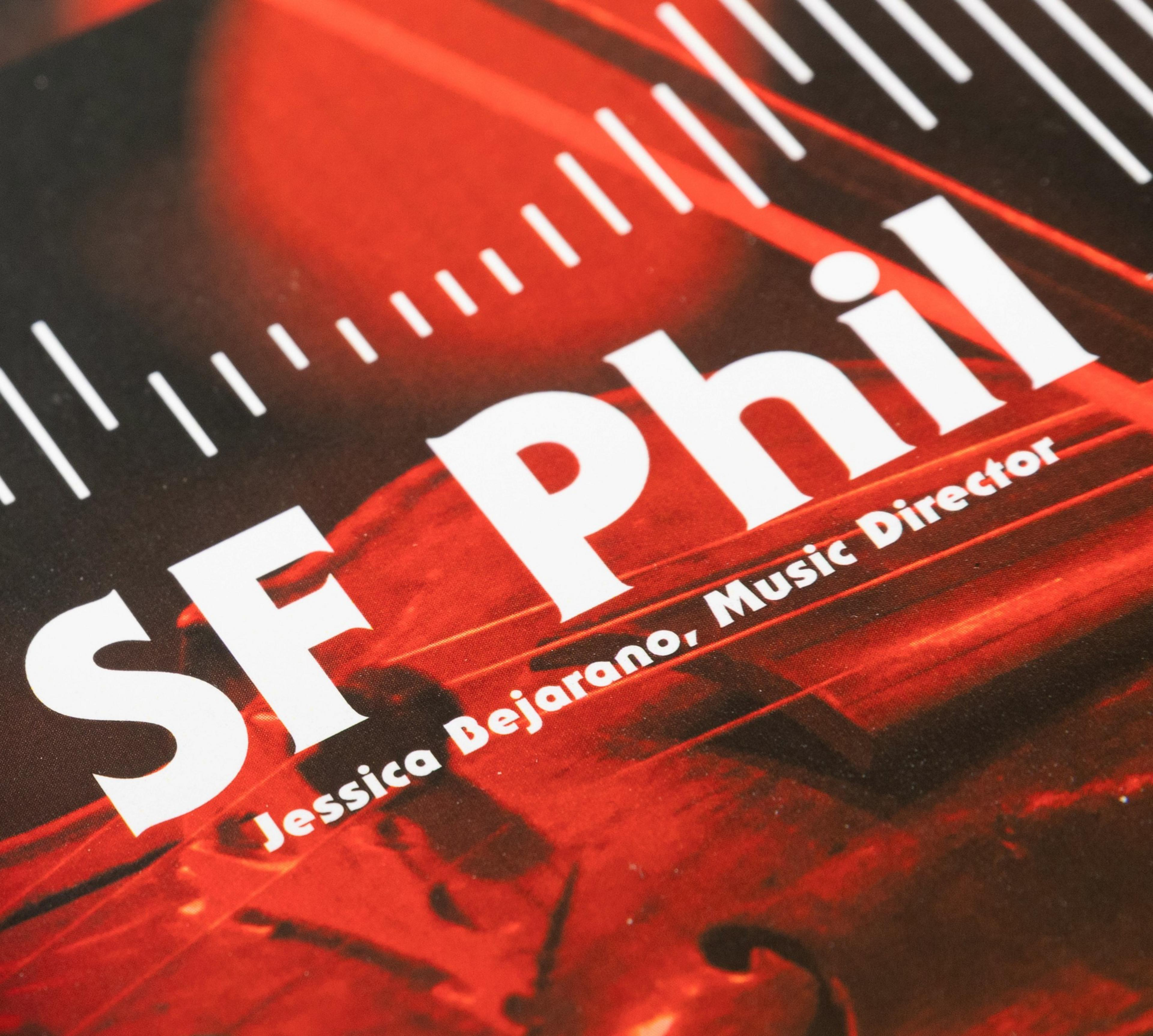Dressed in red silk and flashing a forearm tattoo of Pyotr Tchaikovsky, Jessica Bejarano doesn’t fit the stereotype of an orchestra conductor—and that’s precisely the point.
“It’s about breaking barriers,” said Bejerano, founder and music director of the San Francisco Philharmonic, whose next performance (opens in new tab) is Saturday at the Herbst Theatre. “No bounds.”
At a time when the far larger and more famous San Francisco Symphony is embroiled in controversy in the wake of striking (opens in new tab)musicians, ongoing financial struggles (opens in new tab), and the high-profile departure of music director Esa-Pekka Salonen (opens in new tab), another local stringed outfit appears to be going in the opposite direction.
The San Francisco Philharmonic won three prestigious Clio awards (opens in new tab) last year for its Alta Sinfónica (opens in new tab), an unlikely collaboration with beer company Tecate that brought together string musicians with Latino performers like rapper Snow Tha Product. Another recent crossover performance roped in local rapper Andre Nickatina, while (opens in new tab)4,000 attendees showed up at Chase Center Plaza in November 2022 for a joint performance with the legendary mega-rockers Journey.
“It was about crossing genres and audiences that otherwise would never meet in the same room,” Bejarano said.


For her musicians, it’s refreshing to play with people from all walks of life and in front of audience members of all stripes (ticket prices start at just $25, making orchestral music more accessible to the masses).
“Jessica is not your typical conductor,” said percussion musician Wendy Tran. “She’s such a badass.”
Yet, it’s the gathering of a much smaller group that may be Bejarano’s proudest achievement. In July 2023, the music director invited 16 conductors from around the world for a conducting masterclass (opens in new tab) in the city. It was an effort that had never been tried locally before—not by the San Francisco Symphony, nor by the Conservatory of Music. Part of the draw was the opportunity to study with renowned maestro Donald Schleicher, who was introduced to Bejarano through her conducting colleague Silas Huff.
“He’s the most in-demand teaching conductor in the profession,” Bejarano said of Schleicher, who is slated to lead the workshop again this July.
Bejarano also wanted the workshop to instill a sense of safety and inclusion for female conductors. The philharmonic founder had a negative experience when she attended a conducting masterclass in Eastern Europe in 2019, one of just five female students alongside 15 men.
One day, the teaching maestro singled out one of the female students. “He told her, ‘Out of all the female conductors here, you’re the prettiest,’” Bejarano recalled. “So let me show you how to use your beauty to get the most out of the orchestra.”
The experience was nauseating for Bejarano, and it stoked her desire to do things differently. The gender makeup of the conducting masterclass she organized last July: 11 women and five men.
Breaking barriers, scaling walls
Of course, orchestral conducting has long been a male-dominated domain (opens in new tab). Among the 25 largest ensembles in the country, there is only one woman music director (the Atlanta Symphony Orchestra’s Nathalie Stutzmann). Bejarano—a lesbian Latina who grew up in East Los Angeles, poor in resources, but rich in love, she said—aims to change all that.
At a recent rehearsal at the San Francisco Girls Chorus building in Hayes Valley, Bejarano directed her 75-person symphony’s horn section to play with more warmth and tenderness. “It’s a respite from the chaotic journey,” she told them.
Bejarano, who occasionally interjects “expresivo!” as she’s conducting, is determined to run an orchestra diverse on every level: from the musicians playing the instruments, to the board members and the people in the audience.
“We don’t wave the banner,” she said. “We live it.”
As the daughter of a single mother from Tijuana who worked multiple jobs to support her three children, Bejarano wasn’t exposed to classical music as a child in Los Angeles. She remembers her mother picking through garbage cans for aluminum and glass to help pay the bills, something she was once ashamed of but now uses as inspiration.
“I couldn’t let that go to waste,” she said. “I can still make her proud, even though she’s not here.” (Bejarano’s mother died in 2012.)


Bejarano’s first experience with a classical orchestra didn’t happen until her first year in college at Pasadena City College. She toted her trumpet into an orchestral rehearsal one fateful afternoon, and her life transformed. Hearing Beethoven’s Symphony #5 in surround sound, she remembers, she was overcome—she went to Tower Records immediately after the rehearsal and scooped up as many classical albums as she could.
“I played them all night, literally crying,” she said. “Thinking about what I was deprived of all these years.”
Bejarano likened the experience to finding her long-lost twin, a transformative moment that activated her love of music and led to her dream of being a conductor. She switched to studying music and transferred with a full scholarship to the University of Wyoming at Laramie, later completing her graduate work at the University of California, Davis.
Ironically, for a woman who is all about breaking down barriers, it was an actual wall that later saved her music career. Heartbroken after her mother’s death from a brain aneurism—she died on Mother’s Day—Bejarano gave up music for two years. She decided to instead pursue a career as a San Francisco police officer, with the long-term goal of becoming a detective. She had finished all her exams and training, but failed scaling a 6-foot wall. They offered her to try again after six months, but she never came back.
“That wall saved me,” she said.
Bejarano helmed the local San Francisco Civic Symphony (opens in new tab) before founding the San Francisco Philharmonic in 2020, with a stretch in between teaching music at schools like Alta Vista Elementary and the University High School of San Francisco. When one of her music students drew her as a superhero—as a conductor, she had the power to make ballerinas dance—it reignited Bejarano’s musical dreams.

She went on to conduct orchestras in Russia, Italy, Venezuela and Los Altos, finally getting the chance to create the kind of symphony she always wanted to see, the San Francisco Philharmonic. She organized the first board meeting in 2019 and the group had its first performance in 2020.
Bejarano’s experience in educating children has sparked a vision for her next big endeavor—creating a youth philharmonic, driven by the need to encourage kids who might otherwise not see a string-filled future as a possibility.
“It feels good to be here,” Bejarano said, looking around at her rehearsal space in the San Francisco Girls Chorus building. “At a place where their mission is empowering young women.”
